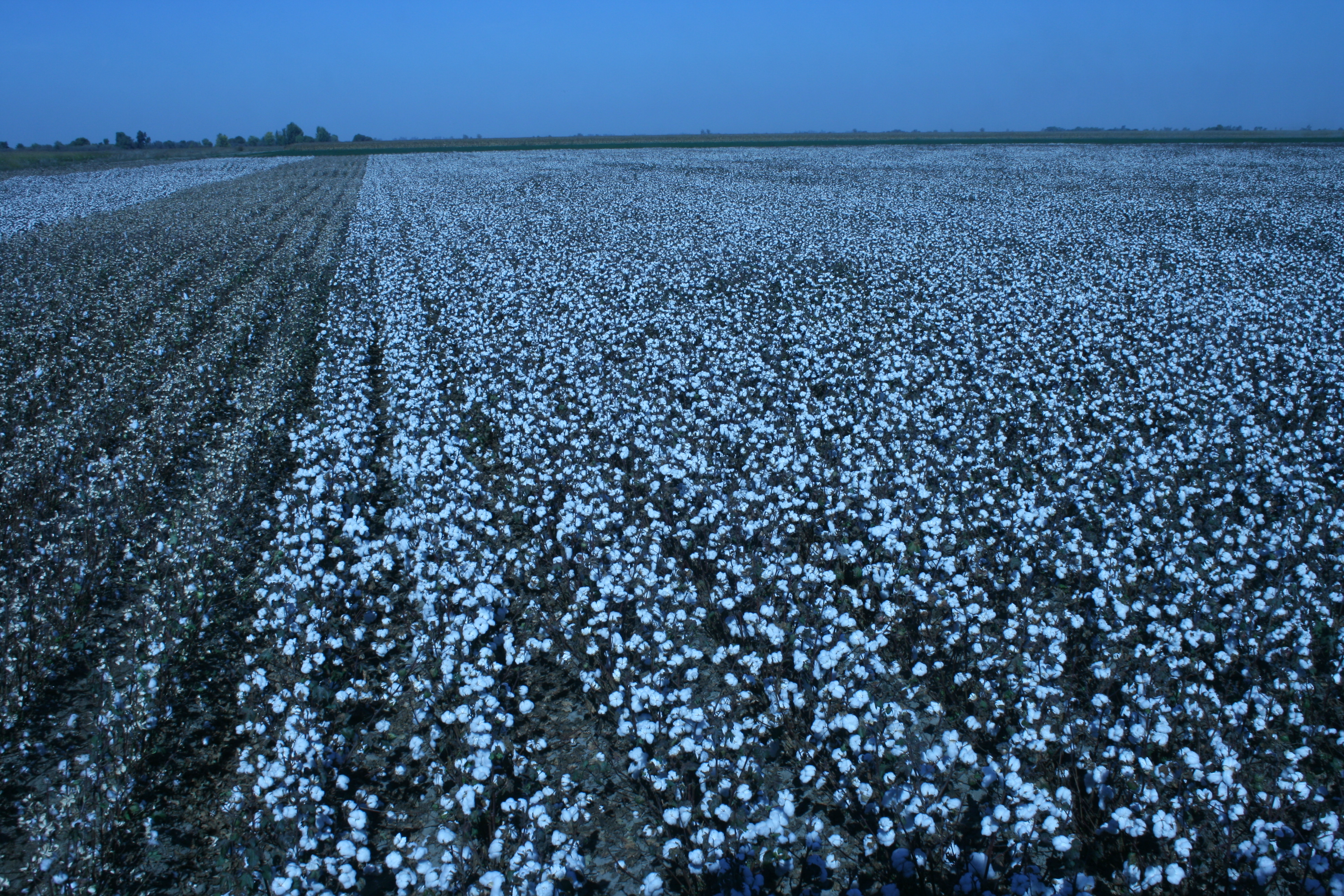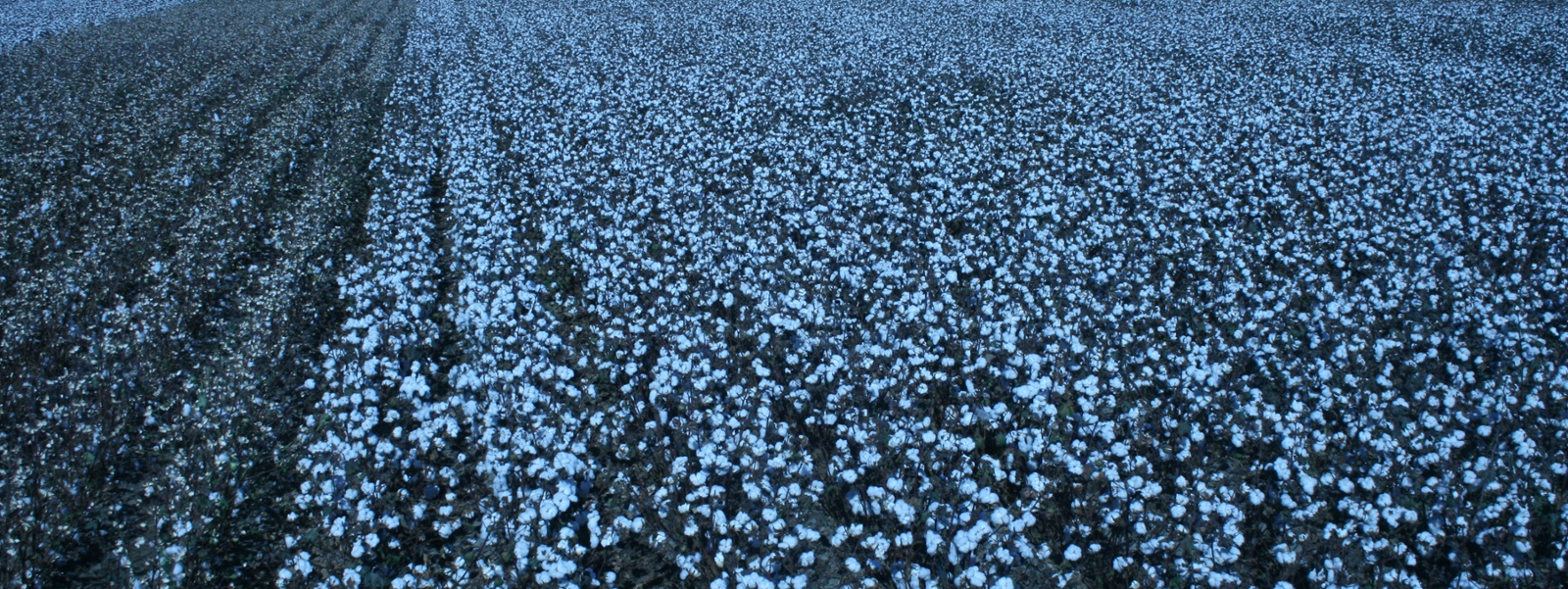Farmers consider their crop options for spring planting

With contracted acreage slashed this year for processing tomatoes, cotton may be a potential alternative crop for some farmers.

By Ching Lee
Falling commodity prices, rising production costs and water supply uncertainty are some of the factors weighing on planting decisions for California farmers this season.
They say their crop options have narrowed, with canneries needing less acreage of processing tomatoes and a major seed company ending its sunflower seed program in California.
Growers who have pulled out permanent crops such as almonds and walnuts in recent years due to lower prices are also looking to plant annual crops on the open ground. This has led to more grower competition for crop contracts.
“This year, everybody’s scrambling,” Merced County farmer Bill Crivelli said.
Canneries offered record-high prices last year to encourage farmers to plant more processing tomatoes. With tomato supplies replenished, growers have seen their contracted acreage slashed this year, and they’re looking to fill the gap with other crops.
Cotton, the price of which has jumped slightly in recent weeks, is one possibility. But Crivelli said he won’t be growing any after “tremendous disappointment” with yields last year due to pest pressure. Plus, the longer growing season for the fiber makes cotton more expensive to grow and a riskier crop, as rain can delay planting in the spring and wreck harvest in the fall.
“People are looking for something different,” Crivelli said.
With higher interest rates making it more costly for farms to borrow money, Crivelli said farmers are leaning toward shorter-season crops such as corn. But he lamented prices for a lot of feed crops, including corn silage, hay and other forages, crashed last year after reaching historical highs during the drought.
Because of high demand from dairies, Crivelli planted twice as many acres of wheat hay last year, but he ended up with lower yields and earned about half of what he made in 2022.
This year, Crivelli said he plans to grow corn for corn nuts, the contracted price of which has dropped from last year, “but it’s still attractive.” He’s also growing melons, though he said contracts are limited—for seed production and for the crop—and prices have also dropped.
Sutter County farmer David Richter said had growers known last fall that their contracted acreage for sunflowers and processing tomatoes would be cut, there would have been more wheat, barley and maybe garbanzo beans planted.
Syngenta told growers in January it was closing its sunflower seed production facility in California and would no longer contract the crop, which was grown for planting seed. Growers estimate Syngenta contracts accounted for some 18,000 acres in California, with about 7,000 acres in the Sutter Basin where Richter farms. Total state harvested acreage in 2023 reached 28,000, according to the U.S. Department of Agriculture.
To make up for the reduced sunflower acreage, Richter said he’s planting more than four times the amount of corn he grew last year, all of which goes to make tortillas and other foods. He’s also planting more beans than he’s ever grown before, including baby limas, green baby limas, canario and cranberry beans.
“Right now, (beans) have a demand, and they’ve had a pretty good price. Are we going to make a killing on it? No, but it’s something you can go to,” Richter said. “It’s an alternative crop just so I won’t have 1,600 acres of corn.”
In past years, vine seed was one contracted crop he could look to for more acreage, but Richter said growers had such good production last year that companies buying the seed don’t need as much this year.
Medium-grain rice, traditionally a staple crop for Sacramento Valley growers, has seen prices drop more than 40% compared to last year. As such, Richter said he won’t be increasing his acreage.
“The prices are down on everything,” he said. “There’s just a tone out there amongst all of us farmers that things might get worse before they get better.”
One positive development is fertilizer prices have moderated compared to recent years, making it less expensive to grow corn, which requires a lot of fertilizer to produce good yields, he said.
Richter said his concern now is the weather and whether standing water in some of his fields, which get seepage from the river, will dry out in time for him to start planting.
For Fresno County farmer Dan Errotabere, who farms in the Westlands Water District, water supply remains a big question mark. As of last month, the water district was allocated 15% of contracted supplies. After the storms in February, Errotabere said he expects the allocation will increase, but how much is unclear. What’s more, with limits on groundwater pumping due to the Sustainable Groundwater Management Act, there’s more reliance on surface water deliveries.
“That’s the dilemma as we go to firm up our plans,” he said. “Decisions are going to be made based on some degree of uncertainty.”
This year’s water supply affects two crop years, Errotaberre noted: water to finish the current crop year and water for planting in the fall. Because his water district likely won’t receive all contracted supplies, he said what’s more certain is that he won’t be able to farm his total acreage.
“Fallowing is a big part of the operation now,” Errotabere said. “It’s how much do we do? Where does it happen? What crops does it affect? Those are decisions we have to make through the spring.”
Contracted crops such as processing tomatoes and garlic are set, he said. Water for permanent crops such as almonds also has been budgeted. Crops that are planted in late spring, such as cotton, “will have some variability,” he added. Markets and prices of those commodities will “justify their place on your farm relative to other crops.”
Errotabere said he continues to make new planting decisions every day, refining them constantly as water availability, weather and market conditions change. Commodity markets, he noted, react to water uncertainties, affecting prices.
With surface water allocation at 15%, Bret Ferguson, who also farms in Fresno County, said he knows he will use that water for his trees and contracted crops such as processing tomatoes and cotton seed. He said he expects to grow some grain but doesn’t yet know how much.
Even though his water allocation will probably increase, Ferguson said he’s not willing to finalize his plans until he knows for sure what his water supply will be. Production costs, especially with respect to labor, are too expensive to make such a gamble, he added.
Other than what he’s growing for seed on contract, he said it may be too late to plant longer-season crops such as cotton by the time the U.S. Bureau of Reclamation announces final water allocations.
“As a farmer, we make split-minute decisions on a day-to-day basis of what crops (to grow),” Ferguson said. “And the bureaucracy takes months to make decisions.”
(Ching Lee is an assistant editor of Ag Alert. She may be contacted at clee@cfbf.com.)




